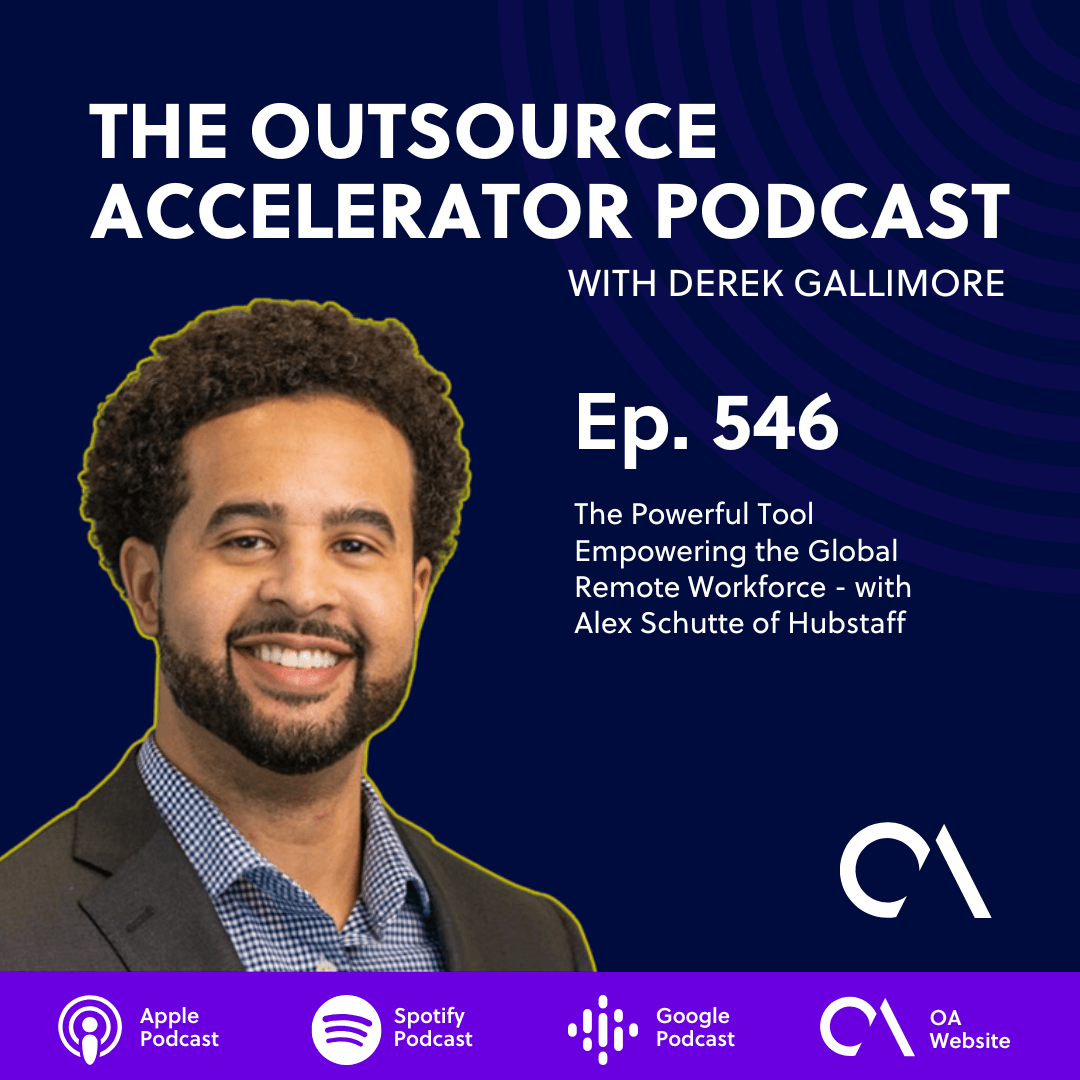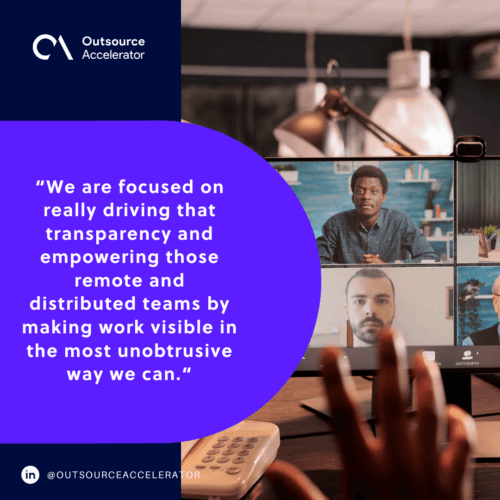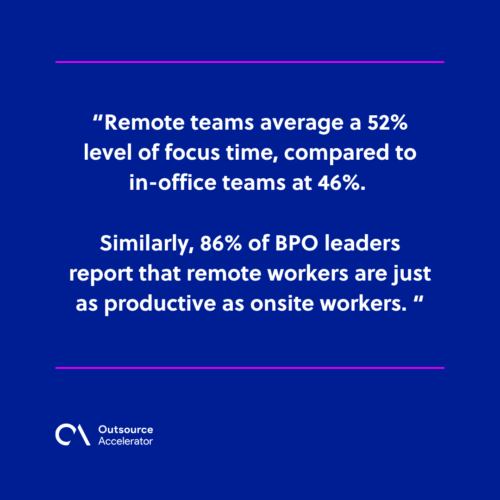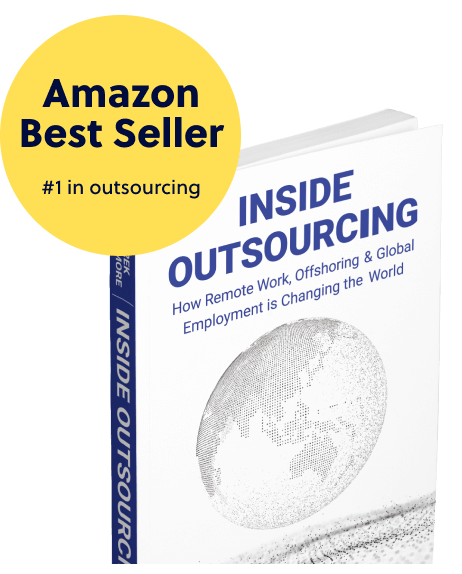The Powerful Tool Empowering the Global Remote Workforce – with Alex Schutte of Hubstaff

In a break from our usual practice of inviting BPO leaders, this week we have Alex Schutte, SVP for Marketing at Hubstaff. Hubstaff is a well-known platform for productivity tracking, especially among remote employees.
Alex and Derek discuss the incredible insights that Hubstaff has found, especially in regards to the usage and adoption of AI.
Hubstaff
Alex introduces Hubstaff as “becoming the operational backbone for any remote-first business.”
“In those environments, our platform provides [the] visibility and proof that you need to effectively and confidently manage distributed teams.”
The Hubstaff platform accomplishes this through detailed tracking, which includes insights on productivity, regular screenshots, and activity monitoring.
“[These] can help drive decisions around who’s working more productively, which projects are taking longer, which clients may be providing potential issues with profitability…
We are focused on really driving that transparency and empowering those remote and distributed teams by making work visible in the most unobtrusive way we can.”

Alex heavily praises the Hubstaff leadership, admiring the platform’s ability to deliver its fundamental purpose.
“They really founded it on the mission to get out of the cubicle world and lean into a better way of work… They’ve really been able to wrap the company around this core mission of ‘How do we help provide freedom through transparency?”
Tracking productivity and accountability
Alex points out the difference between remote work companies and traditional organizations, explaining how Hubstaff is tailor-made for those managing offshore and remote employees.
“When you have an office, you’re obviously paying for this huge capital expense, but you get some peace of mind when you see folks coming in and out. You see who’s staying later, all these visual cues.
But really, proximity does not equal productivity.”
“When you have a remote workforce, you lose the proximity and you can’t visually see them. You’re not able to be over their shoulder, provide coaching… [but] a tool such as ours can really help be that backbone,” he says.
He observes how people get used to the tool, and suggests utilizing it to create opportunities to improve.
“As that trust is built and as their performance improves, it kind of becomes more secondary where they’re using the time data. If there are some red flags, they can then use our monitoring data as an investigative data point, but not the end-all, be-all.
At the end of the day, it’s best to have a human conversation. Don’t just say, ‘Hubstaff says your activity went down. What happened?’ It’s a talking point. It’s a conversation.”
Hubstaff’s key findings
Alex describes what his team calls “focus time,” namely, the time spent on an uninterrupted task.
“We find that remote teams average 52% focus time versus in-office teams [who] are only 46%. That doesn’t sound like a lot, but that’s actually a decent amount of time.
You’re always gonna get pulled away to different tasks, but that ability to focus on a singular task, we find it’s higher. You’re more likely to do that in a remote environment than you are in the office.”
This aligns with surveys they’ve had with some BPO leaders, 86% of whom note that remote workers are just as productive as in-office teams.
Additionally, Hubstaff recently published its AI Productivity Shift report, and Alex relays some of the key findings:
- 85% of surveyed workers say they use AI, but it only makes up 4% of their actual work time.
- The roles that leverage AI the most are SEO teams, marketing departments, and executive support.
- The top three countries with highest AI adoption are Pakistan (84%), Bangladesh (80%), India (80%).
- AI usage and adoption in the US is only at 56%.
- Larger organizations have overall lower usage than smaller ones.
Knowing these can be helpful to companies planning to craft AI strategies going forward.

How BPOs can evolve
Alex gives his thoughts on how BPOs can adapt.
“The opportunity for BPO firms and outsourcing providers is, ‘How can you add some of that value and automate some of that grunt work and then amplify it with actual insight?”
“The key is really to give the keys. Provide some frameworks, but then you really need to have that culture of experimentation [and] of learning where they can’t be a hundred percent focused all the time just doing that day-to-day work,” he explains.
He thinks that the overall view of BPOs has changed, and leaders need to step up to something beyond the usual expectations.
“It started from a cost perspective, but I think that the next phase of growth is really ensuring that the BPO is a strategic growth partner. Your next client, they don’t just want a vendor, they want a strategic co-pilot.
I think the future belongs to those firms that can innovate on outcomes. So whether that’s handling compliance, automation, customer experience, or even integrating AI into these bigger orgs.”
You may learn more by visiting Hubstaff’s website.
If you’d like to ask us anything, you can send us an email at ask@outsourceaccelerator.com.







 Independent
Independent




